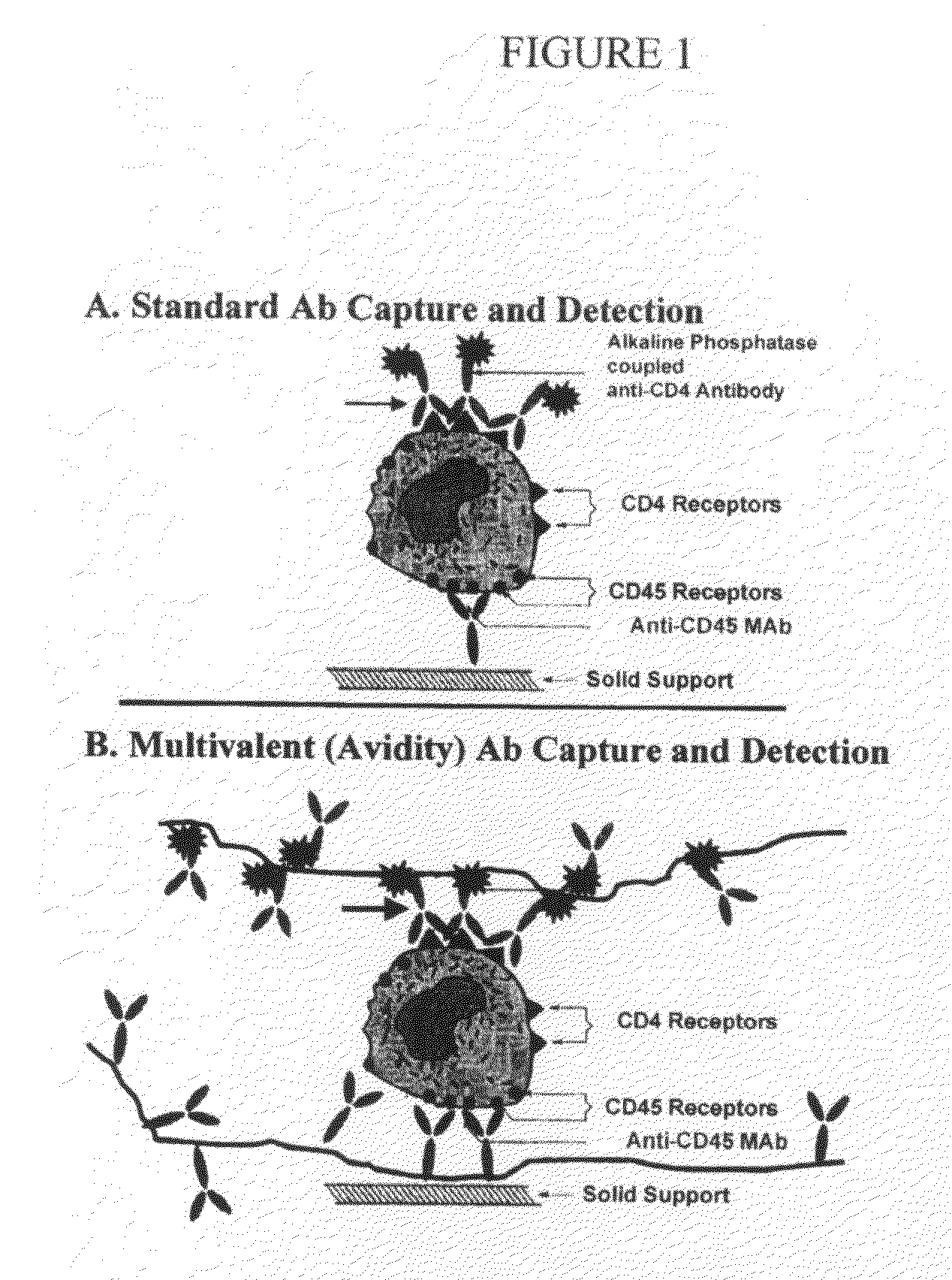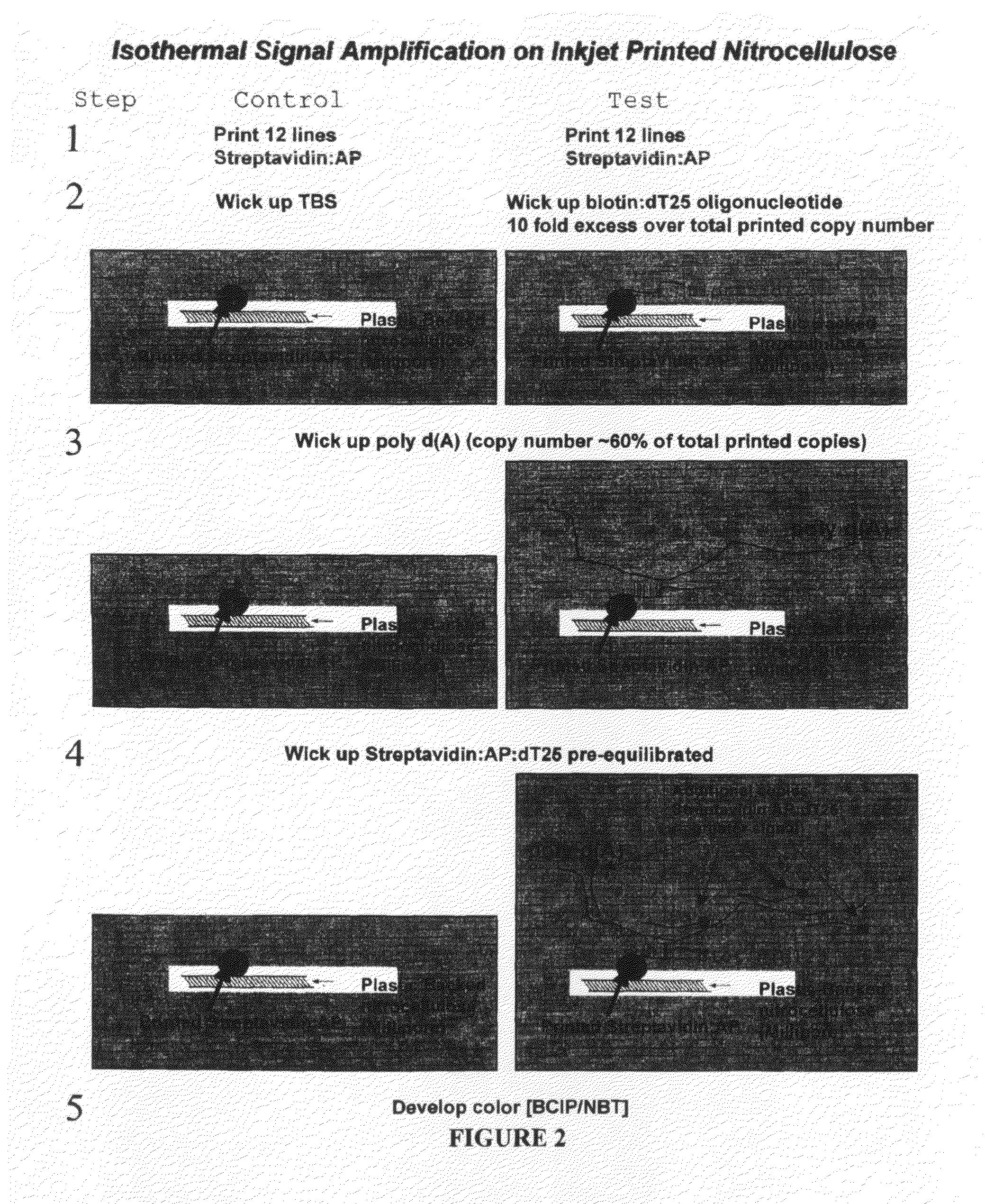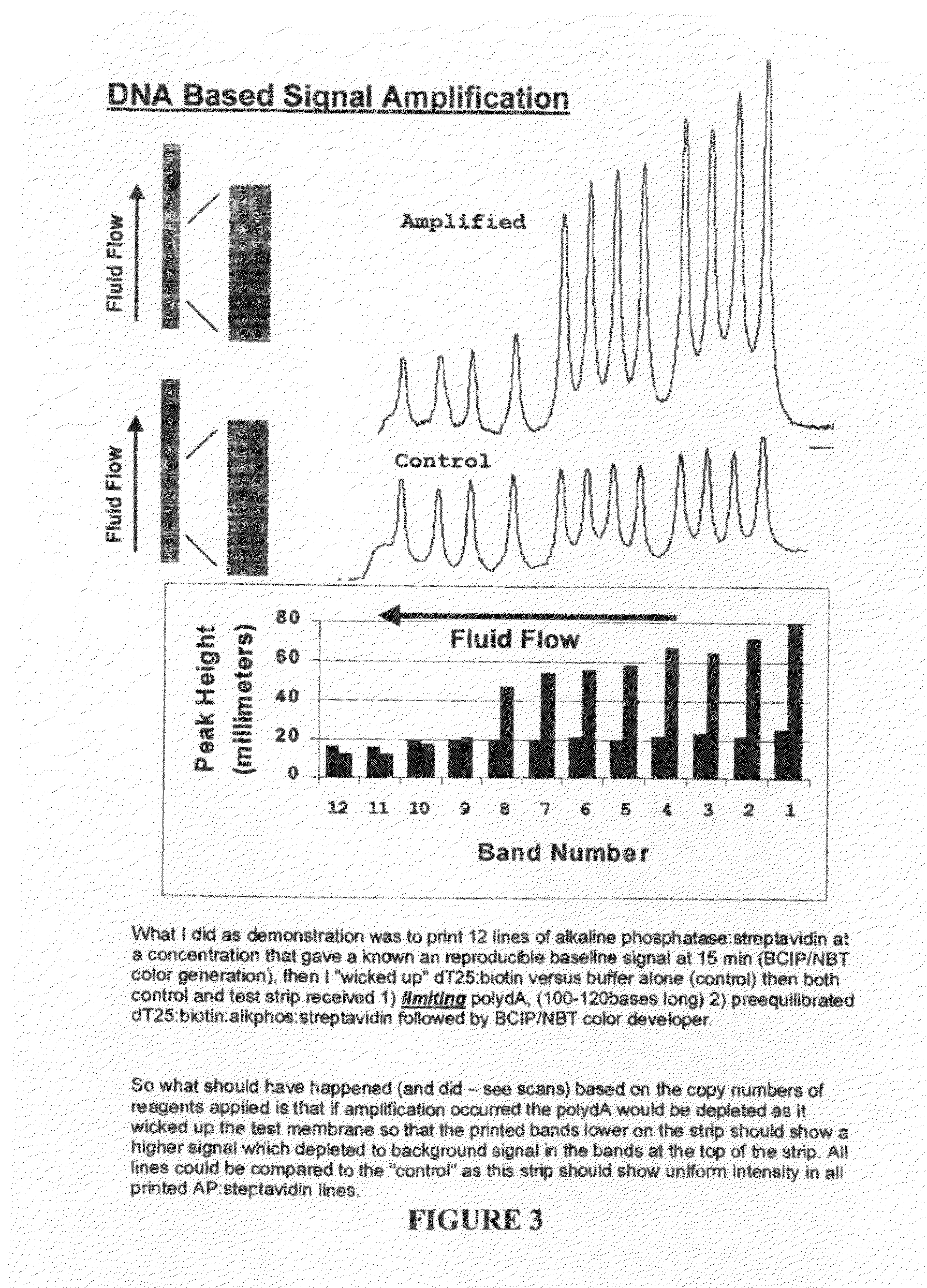Methods and compositions for multivalent binding and methods for manufacture of rapid diagnostic tests
a multivalent binding and composition technology, applied in the field of methods, can solve the problems of complex factors contributing to avidity, inability to design reagents with enhanced binding affinity, and inability to withstand in-vivo delivery of drug moieties, etc., to achieve high efficiency and low cost on site, and formidable barrier to assay deployment. , the effect of reducing the cost of production
- Summary
- Abstract
- Description
- Claims
- Application Information
AI Technical Summary
Benefits of technology
Problems solved by technology
Method used
Image
Examples
example 1
[0181]A Multivalent Anti-CD4 Cell Avidity Construct Employing an Anti-CD45 Receptor Antibody
[0182]In this example, an oligonucleotide of sequence 5′-CTAGCTCTACTACGTGGCTG-3′ is conjugated to anti-CD45 (eBioscience; see protocol).
[0183]Exemplary Oligonucleotide: Conjugation Protocol
[0184]An analyte-specific reagent for binding human CD4 cells was prepared as described below. The reagent included an anti-CD45 portion and an oligonucleotide “tail”. Specifically, human anti-CD45 IgG (available from eBiosciences) in 5 mM EDTA was reduced with 2-mercaptoethylamine hydrochloride (MEA, Pierce, Rockford, IlL) in buffer A (100 mM sodium phosphate, 5 mM EDTA, pH 6.0) to cleave the disulfide bond between the F(ab) fragments and provide a free sulfhydryl group. When the reaction was complete (incubation was at 37° C. for 90 minutes), the mixture was diluted with sterile buffer B (20 mM sodium phosphate, 150 mM NaCl, 1 mM EDTA, pH 7.4) and purified on a Bio-Rad Econo-Pac 10DG column, eluting with ...
example 2
Inkjet Printed Lateral Flow Assay
[0197]This example depicts the simple manufacture of rapid diagnostic assays, by printing a reagent onto a medium for deposition using a liquid deposition device, in this exemplary instance printing onto nitrocellulose test strips using an HP inkjet printer. Tests are printed onto nitrocellulose “card stock” using an Inkjet printer on an “as needed” basis (FIG. 4A). Printing involves opening an HP27 print cartridge, removing the black ink and foam followed by rinsing extensively with water. Then the “screen” over the printhead is removed carefully with tweezers. The print cartridge is then extensively rinsed again with water followed by printing distilled water continuously over an entire page to “purge” the printhead of any remaining ink residue. Then 200-250 microliters of antibody / protein solution is added (spiked with yellow food dye to monitor printing). Any pattern may be constructed in a graphics package (e.g. Microsoft Powerpoint) and printed...
example 3
A Rapid and Quantitative CD4 Test
Specific Aims
[0199]This example involves initial development and validation of a rapid, quantitative lateral flow (immuno-chromatographic) CD4+ T cell counting assay. Our approach to capture of CD4+ cells relies on construction of inexpensive “avidity” constructs capable of capturing all CD4+ cells as they flow across a nitrocellulose membrane. The avidity constructs are applied to the nitrocellulose membrane using ink-jet deposition and the focus of this initial study is to validate the avidity capture approach in the dipstick format. The results of this study will be used to construct an inexpensive dipstick-based CD4+ T cell counting assay that can be used under non-laboratory conditions to obtain clinically relevant assessments. The aims of this study include:
(1) Construct and quantify the effects on T cell binding of antibody:DNA avidity constructs with a variety of anti-CD2 receptor “valencies”.
(2) Empirically determine and minimize the steps n...
PUM
| Property | Measurement | Unit |
|---|---|---|
| noncovalent hybridization | aaaaa | aaaaa |
| nucleic acid sequence | aaaaa | aaaaa |
| affinity | aaaaa | aaaaa |
Abstract
Description
Claims
Application Information
 Login to View More
Login to View More - R&D
- Intellectual Property
- Life Sciences
- Materials
- Tech Scout
- Unparalleled Data Quality
- Higher Quality Content
- 60% Fewer Hallucinations
Browse by: Latest US Patents, China's latest patents, Technical Efficacy Thesaurus, Application Domain, Technology Topic, Popular Technical Reports.
© 2025 PatSnap. All rights reserved.Legal|Privacy policy|Modern Slavery Act Transparency Statement|Sitemap|About US| Contact US: help@patsnap.com



